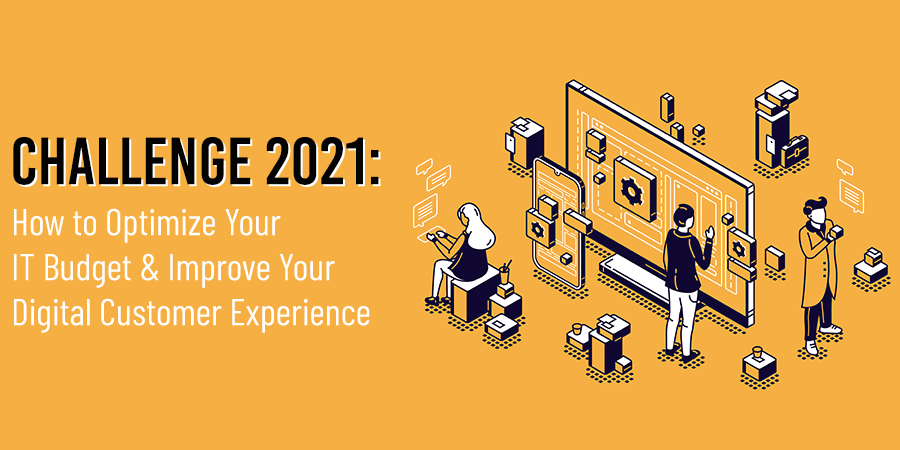In 2021, many companies will face the common challenge of improving their digital customer experience while operating under reduced IT budgets as a result of the coronavirus pandemic.
While there are many uncertainties for 2021, we do know that more and more customers will be heading online to do everything from ordering groceries to attending medical appointments.
For many B2B and B2C companies, it will therefore remain important to continue to build and update their apps, websites, and other digital platforms to provide an enhanced digital customer experience. This, however, is easier said than done.
Many companies are already dealing with budget cuts due to the economic consequences of the coronavirus pandemic. With many anticipating smaller budgets in 2021, IT departments will need to find a way to optimize their resources to properly build, improve and maintain websites, mobile apps, and other digital platforms.
To succeed in overcoming this challenge, we have compiled a list of ways companies can make the most of their IT budgets in order to maximize their digital customer experience.
Establishing Clear Expectations
In the face of budget constraints, maintaining clear communication between all members of your team will become even more important. Without clear communication, it is nearly impossible for members of your team to understand what is expected of them.
A lack of clear communication will also make it more difficult for software development teams to properly understand what they are being asked to build, whether it is additional functionalities to an existing app or redesigning the user interface. When this happens, it is not uncommon for the development teams to spend an entire sprint building functionalities that fail to meet expectations, which can result in additional challenges.
To avoid this fate, it is crucial to establish clear and well-defined user stories that enable all members of the team to have a common understanding of how each function, and the product as a whole, will appear, operate, and what it will achieve. Furthermore, it is vital to maintain a pristine and well-ordered product backlog so that the project can advance, sprint after sprint, in an appropriate fashion established by the product owner or project manager.
Setting Realistic Goals
Having an app or website with all the bells and whistles is great, but it is critical that the goals or expectations for our digital services remain realistic and achievable. Development teams can often become overwhelmed when tasked with developing platforms with major and complex functions without receiving the adequate amount resources to bring the project to fruition.
In these situations, time can be spent building complex functions that ultimately miss their mark or significantly delay the project.
Maintaining realistic goals is also about listening to the development team when they provide feedback regarding what functions from the product backlog can be built during the sprint. Pushing developers to take on an overbearing workload sprint after sprint is not a recipe for success, and will most likely compromise the quality of the functions and product.
Focusing Where It Counts
According to a global IT survey, 95% of companies stated that their technology priorities have been shaped the coronavirus pandemic. At the same time, nearly 90% of respondents expressed that their first priority is improving the digital customer experience.
By focusing on what matters the most, like improving the digital customer experience, companies can do a lot to optimize their budgets and maximize ROI. Areas that enhance the digital customer experience can include the following:
Page Speed
A key component of any digital platform, especially mobile websites, is the speed at which its pages load. Slow-loading websites and applications easily draw the ire of today’s consumer.
In fact, a recent study commissioned by Google and conducted by 55 and Deloitte concluded that improving the page load time for mobile websites can improve a company's bottom line. The study which measured the page load times of 30 major companies in North America and Europe across the retail, travel, luxury, and lead generation industries led to three specific conclusions:
Faster sites mean more customers will reach checkout
With faster site speed, the progression rates are increased throughout nearly every step of the mobile purchase journey. The percentages below are based on an improvement of 0.1 second over the four speed metrics used in the study.
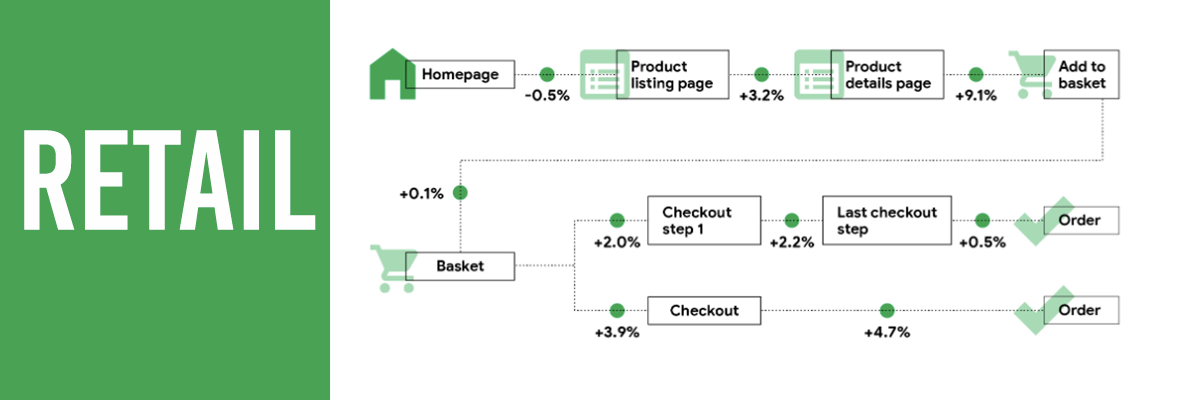
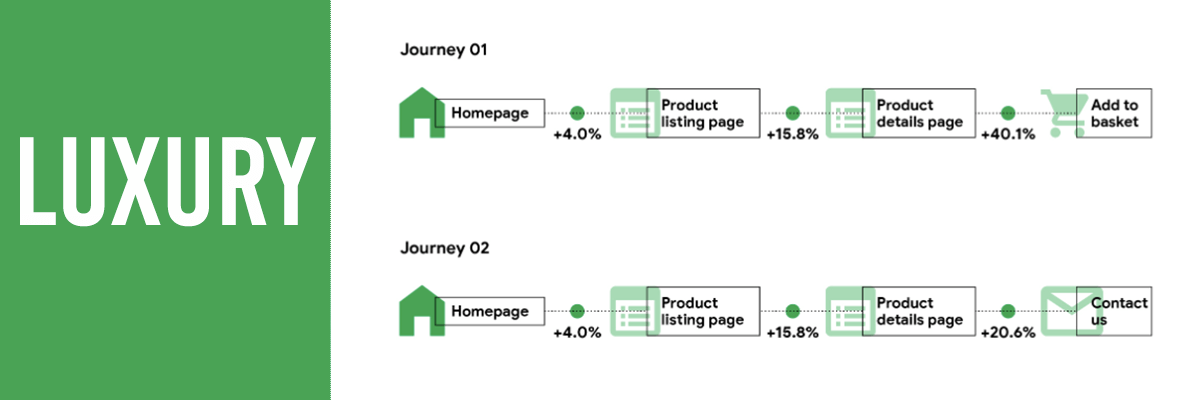
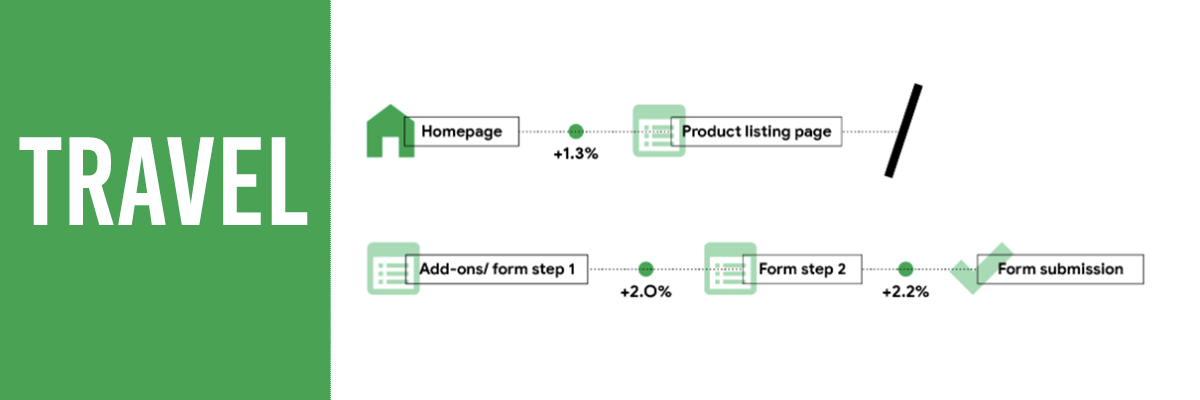
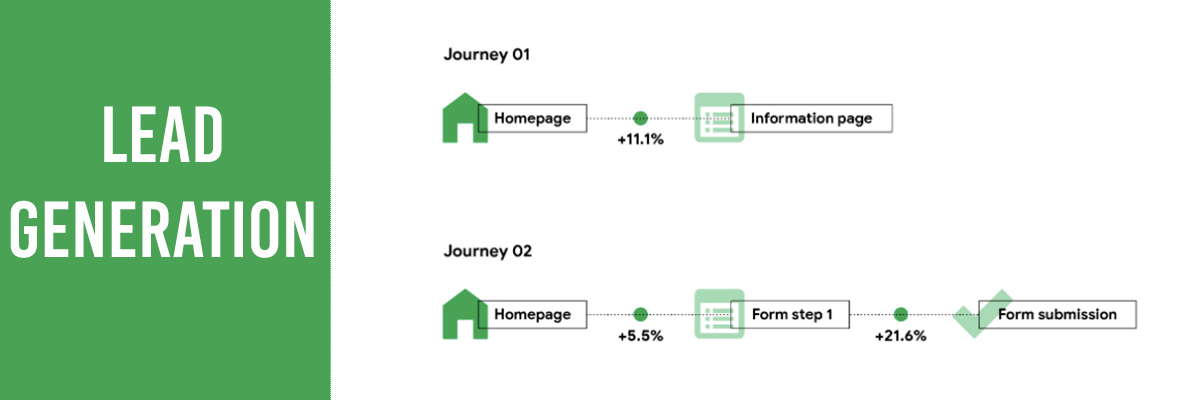
Faster sites encourage people to stay longer and purchase more
When mobile site load times are reduced by just one tenth of a second, the site experience an increase in key KPIs including conversion rates which increased by 8.4% for retail sites and 10.1% for travel sites.
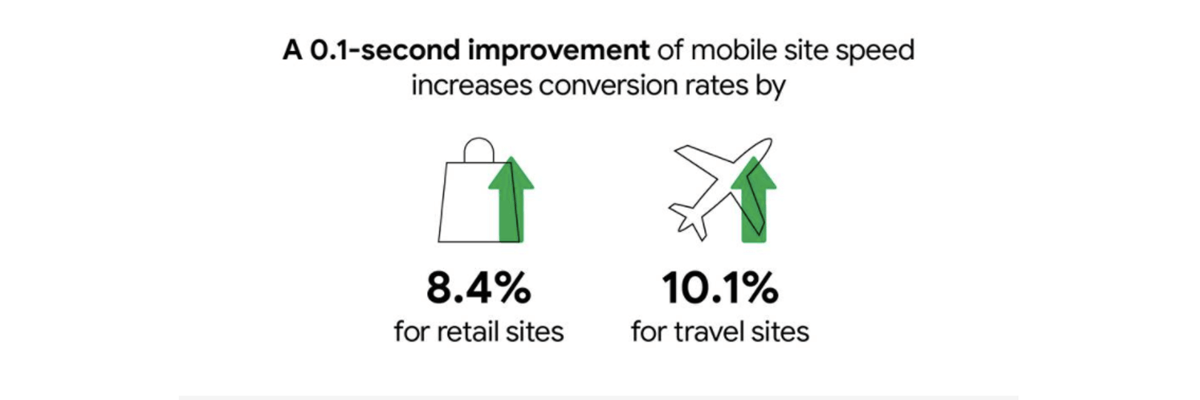
Faster sites have lower bounce rates
Among the retail and luxury sites in the study, one in five witnessed their homepage bounce rates improve by 0.6% and 0.2% respectively. For the lead generation sites, the results were even more significant as a mobile speed improvement of just 0.1 second for an informational page decreased bounce rate by 8.3% for half of the sites.
By focusing on efforts to boost site speed, companies can effectively use their IT budget to improve the digital customer experience and maximize their ROI.
Enhancing the Checkout Process
Besides site speed, ROI can be maximized by enhancing the checkout or lead generation process that allow customers to make purchases, reservations, and much more.
Streamlining these processes can remove hurdles or inconveniences for customers and improve the overall customer experience. While there a number of ways to make the checkout or lead generation process more efficient, some straight-forward strategies include:
- Creating a single page checkout
- Optimizing payment and reservation forms with autofill capabilities
- Offering multiple, relevant payment options
- Adding a progress bar to show customers their progression
User Acceptance Testing via the Crowd
Last but not least, companies can optimize their IT budgets by executing their software testing campaigns more efficiently. Quality assurance (QA) testing is an essential part of any software development project that ensures the product and its functions are up to par. Without testing, digital platforms like apps, websites, chatbots, software solutions, and more are doomed to fail as a result of bugs and other defects that can be catastrophic.
Crowdtesting is QA solution that enables companies to effectively execute user acceptance tests (UAT) for their consumer-facing applications and websites without draining their QA or IT budgets. The strength of crowdtesting lies in its number of freelance professional testers who can quickly perform UAT across a wide array of devices, operating systems, and browsers.
Even for companies with internal QA teams, crowdtesting can be used to boost their testing capabilities when QA teams face significant time constraints or lack resources, human or material, needed to test multilingual apps or websites or across specific hard-to-find devices or configurations.
To learn more, we encourage you to download our guide on crowdtesting below.

